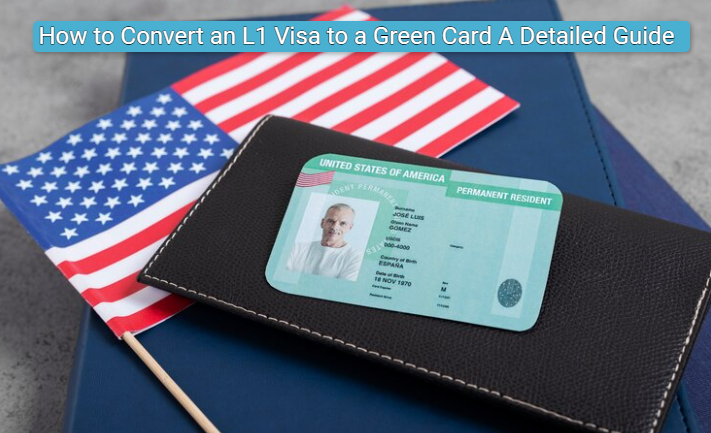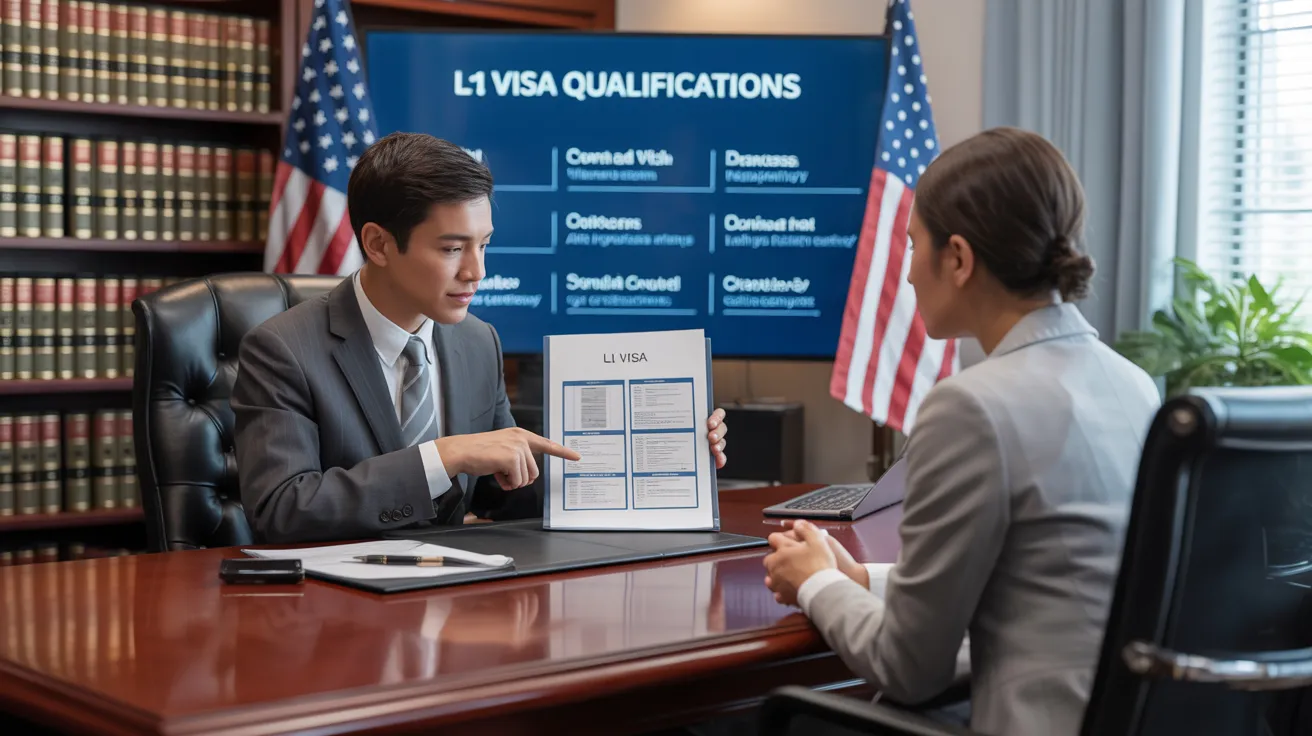Apply for L1 Visa
Whatever You Required to Understand About the L1 Visa: Benefits, Requirements, and Much more
The L1 Visa offers as an essential device for multinational firms seeking to transfer employees to the USA, helping with both functional performance and the transfer of specialized knowledge. With distinctive categories for execs and specialized specialists, this visa presents countless benefits, including potential pathways to permanent residency. Nevertheless, comprehending the eligibility requirements and application process is vital for a successful change. As we take a look at the intricacies of the L1 Visa, it ends up being clear that maneuvering its intricacies is critical for organizations aiming to utilize international talent properly. What obstacles might you encounter in the process?
Overview of the L1 Visa

Sorts Of L1 Visas

Multiple sorts of L1 visas cater to the varied needs of multinational business aiming to move staff members to the USA. Both main classifications of L1 visas are L1A and L1B, each designed for particular duties and obligations within an organization. L1 Visa.The L1A visa is meant for supervisors and executives. This classification enables companies to transfer individuals that hold supervisory or executive positions, allowing them to look after operations in the U.S. This visa is valid for a preliminary duration of as much as 3 years, with the possibility of expansions for an overall of as much as seven years. The L1A visa is particularly helpful for companies seeking to develop a strong leadership presence in the united state market.On the various other hand, the L1B visa is marked for workers with specialized understanding. This includes people that possess sophisticated experience in particular areas, such as exclusive innovations or distinct procedures within the company. The L1B visa is likewise legitimate for an initial three-year period, with extensions offered for approximately 5 years. This visa category is suitable for companies that need staff members with specialized skills to enhance their procedures and preserve a competitive side in the U.S.Both L1A and L1B visas permit double intent, suggesting that visa holders can obtain permanent residency while on the visa. Recognizing the distinctions in between these 2 groups is essential for organizations preparing to browse the complexities of staff member transfers to the United States effectively
Qualification Demands
To qualify for an L1 visa, both the company and the worker need to meet particular qualification criteria established by U.S. migration authorities. The L1 visa is created for intra-company transferees, permitting international business to transfer staff members to their U.S. offices.First, the employer should be a qualifying company, which indicates it needs to have a parent company, branch, subsidiary, or affiliate that is doing organization both in the united state and in the foreign country. This connection is vital for showing that the staff member is being transferred within the exact same business framework. The employer should also have been doing service for a minimum of one year in both locations.Second, the employee has to have been used by the international business for at least one constant year within the 3 years coming before the application. This work has to be in a supervisory, executive, or specialized understanding capacity. For L1A visas, which satisfy supervisors and executives, the staff member needs to demonstrate that they will continue to run in a comparable capability in the U.S. For L1B visas, intended for workers with specialized knowledge, the individual need to possess special experience that contributes substantially to the firm's operations.
Application Process
Steering the application procedure for an L1 visa involves a number of necessary steps that should be finished accurately to ensure an effective result. The primary step is to determine the appropriate classification of the L1 visa: L1A for managers and executives, or L1B for staff members with specialized expertise. This distinction is significant, as it affects the documentation required.Once the classification is determined, the U.S. employer need to submit Form I-129, Application for a Nonimmigrant Worker. This type should consist of comprehensive information concerning the business, the employee's function, and the nature of the job to be done in the U.S. Accompanying paperwork normally consists of evidence of the relationship between the united state and international entities, proof of the employee's certifications, and details regarding the job offer.After submission, the U.S. Citizenship and Immigration Solutions (USCIS) will review the application. If approved, the employee will certainly be alerted, and they can after that request the visa at an U.S. consulate or embassy in their home nation. This entails finishing Type DS-160, the Online Nonimmigrant Visa, and setting up an interview.During the interview, the applicant has to provide various files, consisting of the authorized Type I-129, proof of work, and any type of additional sustaining evidence. Following the meeting, if the visa is approved, the worker will certainly get a visa stamp in their ticket, enabling them to go into the U.S. to function for the sponsoring company. Proper preparation and extensive documentation are crucial to navigating this procedure properly.
Advantages of the L1 Visa
Among the notable advantages of the L1 visa is its capacity to promote the transfer of crucial personnel from international offices to the USA. This visa is particularly beneficial for multinational firms seeking to maintain consistency in procedures and leadership across borders. By allowing execs, supervisors, and specialized employees to function in the U.S., organizations can ensure that their most important talent is available to drive business objectives.Another significant advantage of the L1 visa is its fairly straightforward application procedure contrasted to other work visas. Organizations can request for the L1 visa without the need for a labor qualification, which streamlines the recruitment of foreign staff members. The visa can be approved for a first duration of up to 3 years, with the possibility of expansions, helping with long-lasting assignments.The L1 visa likewise provides a course to irreversible residency. Workers on L1A visas (for supervisors and executives) can request an Environment-friendly Card after one year, quickening their change to irreversible condition. This attribute is an attractive reward for skilled people trying to find stability in the U.S. workforce.Additionally, L1 visa holders can bring their instant household participants to the U.S. under L2 condition, permitting spouses and children to live and examine in the country, boosting the general appeal of this visa category. Overall, the L1 visa serves as an essential tool for worldwide companies, promoting cross-border collaboration and skill mobility.
Usual Challenges
While the L1 visa uses numerous benefits for international business and their workers, it is not without its obstacles. One significant difficulty is the stringent paperwork and qualification demands imposed by the U.S. Citizenship and Migration Solutions (USCIS) Firms should offer thorough proof of the foreign employee's credentials, the nature of the business, and the certifying partnership in between the united state and international entities. This process can be taxing and may call for legal experience to navigate successfully.Another obstacle is the capacity for analysis throughout the request process. USCIS policemans may examine the legitimacy of the organization operations or the worker's function within the organization. This scrutiny can lead to hold-ups or perhaps rejections of the visa, which can considerably impact the firm's functional plans and the employee's job trajectory.Furthermore, the L1 visa is linked to the sponsoring employer, which implies that job changes can make L1 Visa complex the visa status. If an L1 visa holder desires to change employers, they have to often go after a various visa classification, which can add complexity to their immigration journey.Lastly, preserving conformity with L1 visa guidelines is essential. Employers must guarantee that their employee's duty straightens with the preliminary application which the company remains to fulfill the eligibility needs. Failure to do so can cause retraction of the visa, impacting both the worker and the company. These difficulties necessitate comprehensive preparation and recurring management to assure a successful L1 visa experience.
Tips for Success
To effectively navigate the L1 visa procedure, careful prep work is critical. Start by thoroughly recognizing the particular needs for the L1 visa classification you are looking for, whether L1A for managers and execs or L1B for employees with specialized understanding. Gather all required documentation early while doing so, including proof of your work background, organizational framework, and the nature of the organization operations.Engage lawful counsel experienced in immigration regulation to lead you via the details of the application. An attorney can assist ensure that your application is complete, precise, and engaging. They can also assist in planning for possible demands for proof (RFEs) by proactively addressing areas that may elevate questions.Additionally, preserve clear communication with your employer, that should offer necessary support for your application. What Is L1 Visa. Validate that they understand their responsibilities, consisting of submitting the essential requests and offering documents that substantiates your function in the organization.Prepare for the visa meeting by practicing answers to typical questions concerning your specialist history and the nature of your work. Showing confidence and clearness can considerably influence the result of your application
Frequently Asked Questions
Can Household Members Accompany L1 Visa Holders?
Yes, relative can accompany L1 visa holders. Spouses and single youngsters under 21 years old are eligible for L2 visas, which enable them to live and examine in the USA during the L1 holder's keep.
The Length Of Time Can L1 Visa Holders Keep in the U.S.?
L1 visa owners can originally stay in the U.S. for up to three years (L1 Visa Requirements). This duration may be extended, permitting a maximum stay of seven years for L1A visa holders and 5 years for L1B visa owners
Is the L1 Visa a Twin Intent Visa?

Can L1 Visa Owners Get a copyright?
Yes, L1 visa owners can request an eco-friendly card - L1 Visa. The L1 visa supports double intent, permitting owners to seek permanent residency while maintaining their non-immigrant standing, promoting a smoother transition to an environment-friendly card
What Happens if an L1 Visa Is Denied?
If an L1 visa is denied, the candidate may get a notification describing the factors for denial. L1 Visa. They can appeal the decision, reapply, or check out alternative visa choices depending upon their situations and qualifications
Conclusion
In summary, the L1 Visa functions as a vital tool for multinational companies seeking to transfer workers to the USA. Understanding the distinctions in between L1A and L1B classifications, together with the eligibility needs and application processes, is crucial for effective navigation of this non-immigrant category. The benefits provided, consisting of streamlined applications and paths to long-term residency, further enhance its charm. Attending to typical obstacles efficiently can result in a much more beneficial result in the visa process.